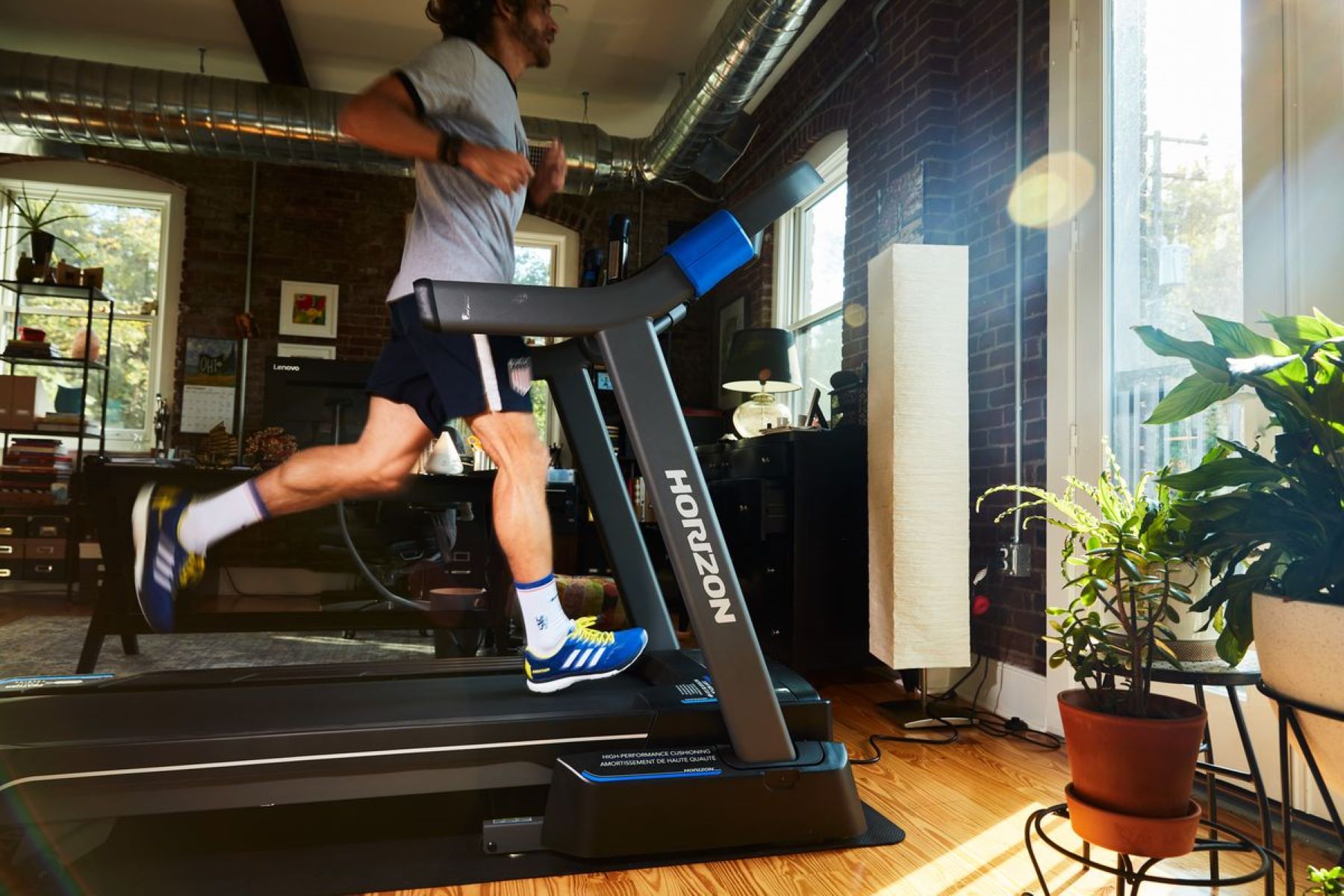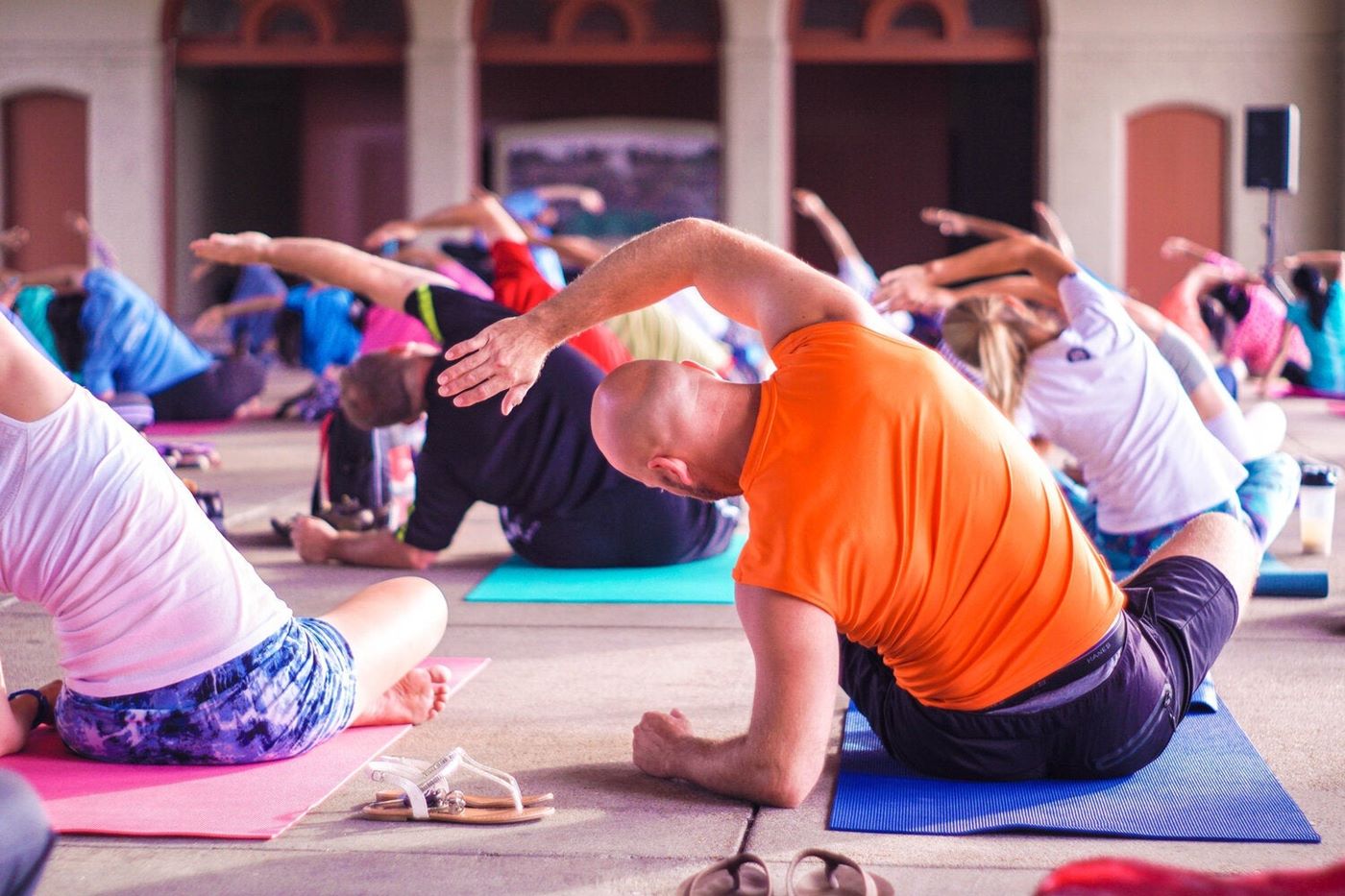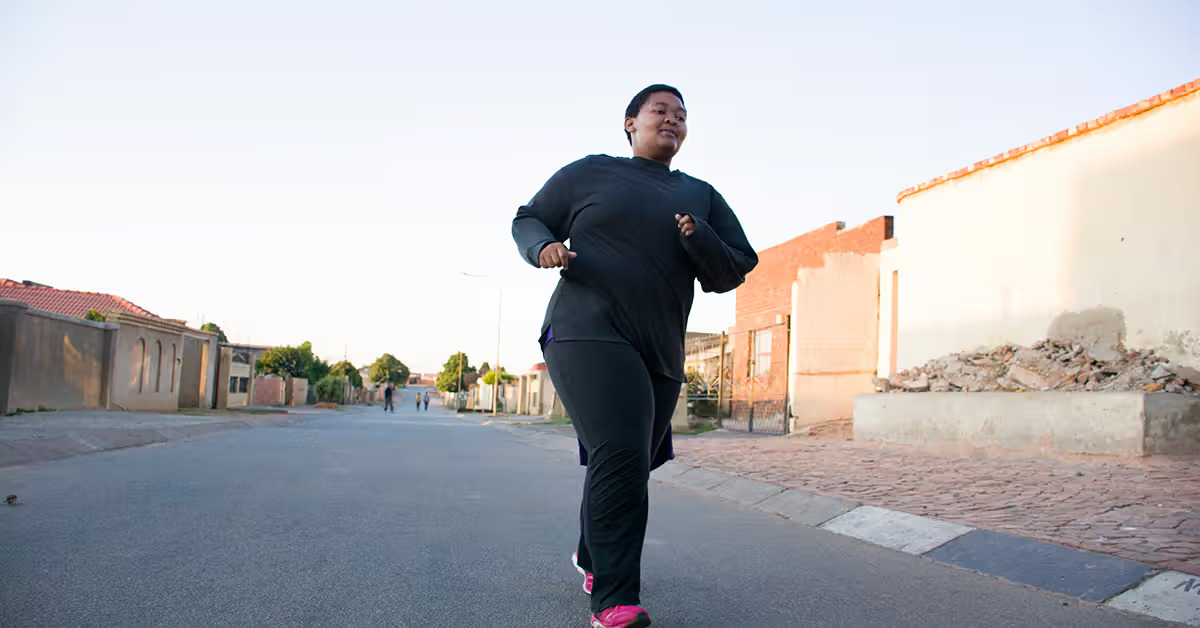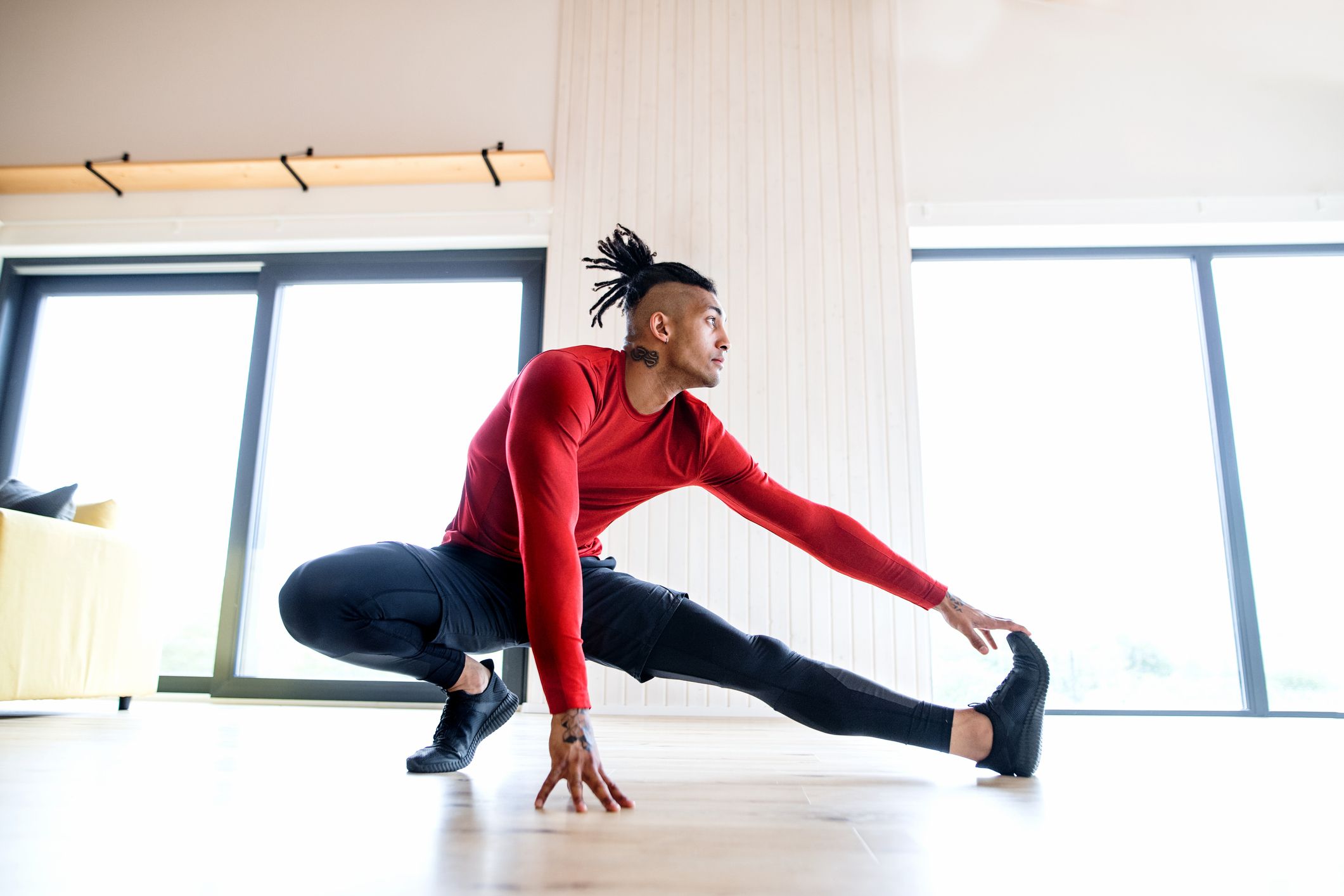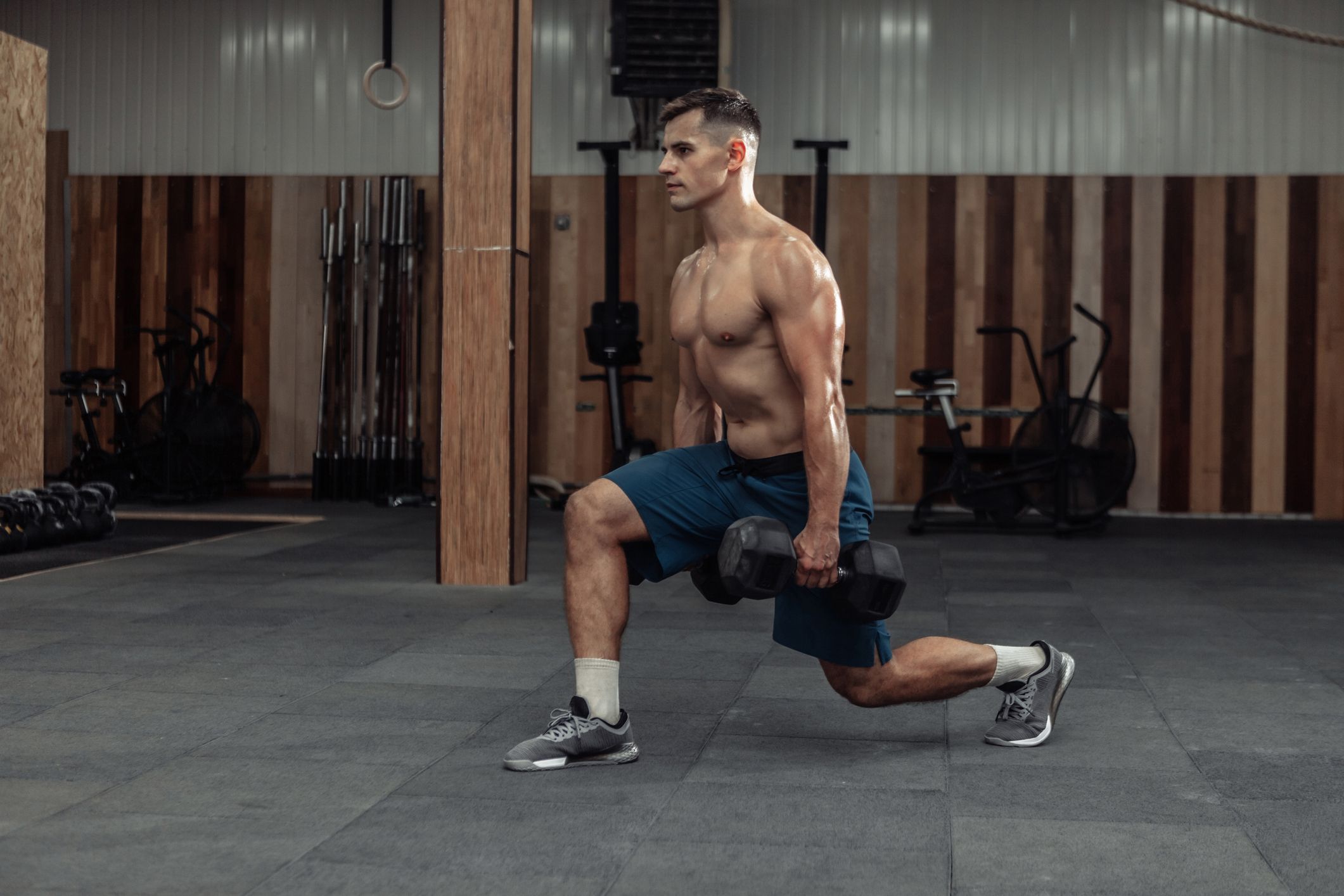

Featured
What Is A Lunge Exercise
Published: September 26, 2023
Discover the benefits of lunges as a featured exercise. Strengthen your lower body and improve balance with this effective workout.
Introduction
The lunge exercise is a versatile and effective movement that targets multiple muscle groups in the lower body. Whether you’re a fitness enthusiast, an athlete, or someone looking to improve their overall strength and stability, incorporating lunges into your workout routine can yield significant benefits.
Traditionally used in the world of athletics to enhance performance, lunges have now become a popular exercise choice for people of all fitness levels. This functional movement, which mimics everyday activities like walking and climbing stairs, helps to improve balance, coordination, and flexibility.
While lunges primarily target the quadriceps, hamstrings, and glutes, they also engage the core, hips, and lower back muscles. This compound exercise recruits various muscle groups simultaneously, allowing for increased calorie burn and overall body toning.
Whether you’re looking to sculpt your legs, increase your explosiveness for sports, or simply improve your overall fitness level, the lunge exercise can be a valuable addition to your workout routine. In this article, we will explore the different types of lunges, the benefits they offer, proper form and execution techniques, common mistakes to avoid, modifications and variations, as well as tips for incorporating lunges into your fitness regimen.
Definition of Lunge Exercise
A lunge exercise is a lower body movement that involves stepping forward, backward, or to the side, while maintaining an upright posture. It requires the lower body muscles to work together to stabilize and control the body during the movement. The basic lunge involves bending the front knee and lowering the back knee towards the ground, with the weight evenly distributed between both legs.
Lunges can be performed using bodyweight, or they can be intensified by adding external resistance such as dumbbells, kettlebells, or a barbell. The range of motion can also vary depending on the individual’s flexibility and mobility.
The lunge exercise is often used in strength and conditioning programs, functional training, and rehabilitation settings due to its ability to improve lower body strength, stability, and mobility. It targets the quadriceps, hamstrings, glutes, and calves, while also engaging the core and hip muscles.
There are various types of lunges, including forward lunges, reverse lunges, lateral lunges, walking lunges, and stationary lunges. Each variation targets the muscles from different angles, providing a well-rounded lower body workout.
Overall, the lunge exercise is an effective way to improve lower body strength, enhance athletic performance, and increase functional fitness. By incorporating lunges into your workout routine, you can maximize the benefits of this versatile exercise and take your fitness journey to new heights.
Benefits of Lunge Exercises
Lunge exercises offer a multitude of benefits for both the body and mind. Here are some of the key advantages of incorporating lunges into your workout routine:
- Lower body strength: Lunges target the major muscle groups in the lower body, including the quadriceps, hamstrings, glutes, and calves. By regularly performing lunges, you can strengthen these muscles, leading to improved power, endurance, and stability.
- Functional movement: Lunges mimic everyday movements such as walking and climbing stairs. By training these specific movement patterns, you can improve your balance, coordination, and overall functional fitness.
- Improved core stability: Performing lunges requires core activation to maintain balance and stability. This helps to strengthen the abdominal muscles, obliques, and lower back, leading to improved core strength and posture.
- Enhanced flexibility: Lunges require a certain degree of flexibility, especially in the hip flexors and hamstrings. Regularly practicing lunges can help to increase your overall flexibility and range of motion in the lower body.
- Calorie burn and weight management: Lunges are a compound exercise that engages multiple muscle groups simultaneously. This leads to a higher calorie burn during the exercise and can contribute to weight management and fat loss.
- Injury prevention: Strong and stable legs can help prevent injuries, especially in the knees, hips, and ankles. Lunges strengthen the muscles surrounding these joints, providing greater support and protection during physical activities.
- Boosted athletic performance: Lunges are a functional movement that translates to various sports and physical activities. By improving lower body strength, power, and stability, lunges can enhance your performance in activities such as running, jumping, and agility-based sports.
- Mental focus and mind-body connection: Lunges require balance, concentration, and proper form. By performing lunges mindfully, you can develop a stronger mind-body connection, improve your focus, and enhance your overall workout experience.
These are just a few of the many benefits that lunge exercises offer. Whether you’re aiming to build strength, improve your athletic performance, or simply enhance your overall physical well-being, incorporating lunges into your fitness routine can help you achieve your goals.
Types of Lunge Exercises
There are various types of lunge exercises that target different muscles and offer unique challenges. By incorporating different lunge variations into your workout routine, you can keep your workouts fresh and continuously challenge your muscles. Here are some of the most popular types of lunge exercises:
- Forward Lunge: This is the most common type of lunge exercise. Start by standing with your feet hip-width apart. Take a step forward with one leg, keeping your torso upright and shoulders relaxed. Bend both knees and lower your body until your front thigh is parallel to the ground and your back knee is hovering just above the floor. Push through your front heel to return to the starting position.
- Reverse Lunge: Similar to the forward lunge, the reverse lunge involves stepping backward instead of forward. Begin by standing with your feet hip-width apart. Step one leg back, landing on the ball of your foot. Lower your body down, bending both knees until your back knee is hovering just above the ground. Push through your front heel to return to the starting position.
- Lateral Lunge: The lateral lunge targets the inner and outer thighs, as well as the glutes. Start by standing with your feet wider than hip-width apart. Take a step sideways with one leg, keeping your toes pointing forward. Bend the knee of the leg you’re stepping with, while keeping the other leg straight. Lower your body as far as comfortable, then push off the bent leg to return to the starting position.
- Walking Lunge: The walking lunge is a dynamic variation of the lunge exercise. Start by standing with your feet hip-width apart. Take a step forward with one leg and lower your body into a lunge position. Push off the front foot to bring the back leg forward and immediately step into the next lunge. Continue alternating legs as you move forward, creating a walking motion. This exercise challenges stability and coordination.
- Curtsy Lunge: The curtsy lunge is a variation that targets the glutes and inner thighs. Begin by standing with your feet hip-width apart. Cross one foot behind the other, slightly to the side. Bend both knees and lower your body down as if performing a curtsy. Keep your torso upright and engage your core. Push through the heel of the front foot to return to the starting position, then repeat on the other side.
- Pulse Lunge: In the pulse lunge, you will hold the bottom position of the lunge and perform small and controlled up-and-down movements. This exercise increases time under tension, leading to greater muscle activation and endurance.
- Jumping Lunge: For an advanced variation, the jumping lunge adds plyometric power to the movement. Start in a lunge position, with one leg forward and one leg back. From this position, explosively jump in the air and switch leg positions, landing softly with the opposite leg forward. This exercise increases cardiovascular fitness and explosive strength.
These are just a few examples of the many lunge variations you can incorporate into your workout routine. Experiment with different types of lunges to target specific muscle groups and add variety to your training regimen.
Proper Form and Execution of Lunge Exercises
Proper form is crucial when performing lunge exercises to ensure effectiveness and prevent injuries. Follow these guidelines to maintain correct form during lunges:
- Starting Position: Stand with your feet hip-width apart, keeping your core engaged and your shoulders relaxed. Maintain an upright posture throughout the exercise.
- Step Length: Take a step forward, backward, or to the side, depending on the type of lunge you are performing. The length of your step should allow you to maintain a 90-degree angle at both knees when you lower into the lunge position.
- Lunge Depth: As you lower into the lunge, aim to have both knees at a 90-degree angle, with your front thigh parallel to the ground. Avoid allowing your front knee to extend past your toes.
- Keep Your Weight Centered: Distribute your body weight evenly between both legs. Avoid leaning too far forward or backward, as this can compromise your balance and form.
- Back Knee Position: While performing lunges, ensure your back knee hovers just above the floor. Avoid resting your knee on the ground, as this can reduce the engagement of the muscles.
- Foot Position: Your front foot should be firmly planted on the ground, with your toes pointing forward. The heel of your back foot should be up, allowing for greater stability and control.
- Push Through Your Heel: As you return to the starting position, focus on pushing through the heel of your front foot. This helps activate the glutes and hamstrings for a more effective movement.
- Breathe: Inhale as you lower into the lunge and exhale as you push back up. Maintain a steady breathing pattern to ensure optimal oxygen supply to the working muscles.
- Controlled Movements: Perform lunges in a slow and controlled manner. Avoid rushing or using momentum, as this can compromise your form and reduce the effectiveness of the exercise.
- Engage Core Muscles: Activate your core muscles throughout the movement to stabilize your body and protect your lower back.
Remember to always listen to your body and modify the range of motion or intensity as needed. If you experience any pain or discomfort, stop the exercise and consult with a qualified fitness professional or healthcare provider.
By following proper form and execution techniques, you can maximize the benefits of lunge exercises and minimize the risk of injury.
Common Mistakes to Avoid
When performing lunge exercises, it’s important to be aware of common mistakes that can hinder your progress and increase the risk of injury. By avoiding these mistakes, you can ensure that you’re getting the most out of your lunges and maintaining proper form. Here are some common mistakes to watch out for:
- Incorrect Alignment: One of the most common mistakes is allowing your knees to cave inwards or shift too far forward past your toes. This can put unnecessary strain on the knees and increase the risk of injury. Instead, focus on maintaining proper alignment by keeping your knees in line with your toes throughout the movement.
- Leaning Too Far Forward: Leaning excessively forward can lead to an imbalance and place extra stress on the lower back. Keep your torso upright and avoid leaning forward. Engage your core muscles to help maintain proper alignment.
- Not Going Deep Enough: Partial repetitions can limit the benefits of lunges. Ensure that you’re going deep enough into the lunge by aiming to have both knees at a 90-degree angle. This will fully engage the muscles and optimize the exercise’s effectiveness.
- Moving Too Quickly: Speeding through lunges can compromise your form and reduce the effectiveness of the exercise. Perform lunges in a slow and controlled manner, focusing on the mind-muscle connection and maintaining proper alignment.
- Weak Core Engagement: Neglecting to engage your core muscles during lunges can lead to instability and poor form. Make sure to activate your core by drawing your belly button in towards your spine throughout the exercise.
- Not Using a Full Range of Motion: Some individuals may not utilize the full range of motion in lunges, limiting the activation of the targeted muscles. Work on developing flexibility and mobility to optimize your lunge performance and engage the muscles fully.
- Neglecting Both Sides: It’s important to work both sides of your body evenly. Avoid overemphasizing one side or neglecting the other. Alternate legs between sets or include an equal number of repetitions for each leg to maintain balance and symmetry.
- Improper Foot Positioning: Incorrect foot positioning can compromise your stability and form. Ensure that your front foot is planted firmly on the ground, and your back foot is up on the ball with the heel off the ground.
- Not Warming Up: Skipping a proper warm-up can increase the risk of injury. Before starting your lunge exercises, warm up your muscles with dynamic stretches or a light cardio activity to prepare your body for the movements ahead.
- Ignoring Pain or Discomfort: It’s crucial to listen to your body and avoid pushing through pain or discomfort. If you experience any sharp or prolonged pain during lunges, stop the exercise and consult a healthcare professional.
By being mindful of these common mistakes and focusing on proper form and technique, you can make the most out of your lunge exercises and achieve optimal results.
Modifications and Variations of Lunge Exercises
Lunge exercises can be modified and varied to suit different fitness levels and specific goals. Whether you’re a beginner looking to build strength or an advanced athlete looking for a new challenge, here are some modifications and variations of lunge exercises to consider:
- Bodyweight Lunges: If you’re new to lunges or recovering from an injury, starting with bodyweight lunges is a great option. Focus on mastering the proper form and technique before adding external resistance.
- Resistance Lunges: To increase the intensity and challenge of lunge exercises, you can add resistance using dumbbells, kettlebells, or a barbell. Hold the weights in your hands or rest them on your shoulders while performing lunges.
- Elevated Lunges: Elevating your front or back foot on a step or platform can enhance the difficulty of lunges. This modification increases the range of motion and places greater emphasis on the working muscles.
- Split Squats: Split squats are a unilateral variation of lunges that focus on one leg at a time. Instead of continuously alternating legs, perform all repetitions on one leg before switching to the other. This variation isolates each leg individually and allows for greater focus and control.
- Lunge Jumps: Lunge jumps add plyometric power to the exercise, increasing explosive strength and cardiovascular fitness. From a lunge position, explosively jump in the air, switch legs, and land softly in a lunge on the opposite side.
- Walking Lunges with Rotation: Incorporate rotational movement into your lunges by adding a twist or rotation at the torso. This engages the obliques and adds a functional aspect to the exercise.
- Weighted Walking Lunges: For an additional challenge, perform walking lunges while holding weights in your hands or wearing a weighted vest. This increases the resistance and demands more strength and stability.
- Lateral Lunges with Resistance Band: To further target the inner and outer thighs, incorporate a resistance band into your lateral lunges. Place the band around your thighs, just above the knees, and perform lateral lunges as usual. The band provides additional resistance, activating the hip abductors and adductors.
- Lunge Pulses: Add an isometric hold to your lunges by incorporating pulse movements. After lowering into the lunge position, perform small, controlled up-and-down movements without fully standing back up. This increases time under tension and intensifies the muscle activation.
- Balance Lunges: Challenge your balance and stability by performing lunges on an uneven surface, such as a balance board or a wobble cushion. This variation engages the stabilizer muscles and strengthens the ankles and lower legs.
Remember to choose modifications and variations that align with your fitness level and goals. Start with simpler modifications and progress gradually as you gain strength and confidence. Always prioritize proper form and listen to your body to prevent injury. Consulting with a fitness professional can provide further guidance and personalized recommendations.
Incorporating Lunge Exercises into Your Workout Routine
Lunge exercises can be a valuable addition to any workout routine, whether you’re focused on strength training, endurance, or overall fitness. Here are some tips on how to incorporate lunge exercises effectively:
- Set Frequency: Aim to incorporate lunge exercises into your routine two to three times per week, allowing for proper rest and recovery between sessions. This will help build strength and endurance in the lower body muscles.
- Variety: Include a variety of lunge exercises to target different muscles and challenge your body in different ways. Alternate between forward lunges, reverse lunges, lateral lunges, and other variations to keep your workouts interesting.
- Warm-up: Prior to performing lunge exercises, warm up your body with dynamic stretches or light cardio activities. This helps increase blood flow to the muscles, loosens up the joints, and prepares your body for the exercise.
- Pair with Other Exercises: Incorporate lunges into a comprehensive lower body workout by combining them with other exercises such as squats, deadlifts, and step-ups. This will provide a well-rounded lower body workout and maximize your results.
- Progress Gradually: If you’re new to lunge exercises, start with bodyweight lunges and gradually increase the difficulty by adding resistance or trying more challenging variations. Progression should be gradual to prevent injury and allow your body to adapt.
- Circuit Training: Include lunges in a circuit training routine by alternating between different exercises in a fast-paced manner. This not only challenges the muscles but also increases cardiovascular fitness and calorie burn.
- Superset with Upper Body Exercises: Pair lunge exercises with upper body exercises to create supersets. This can help save time in your workout and increase overall workout intensity. For example, perform a set of lunges followed by a set of dumbbell rows or push-ups.
- Focus on Proper Form: Always prioritize proper form and technique when performing lunge exercises. This ensures maximum effectiveness and reduces the risk of injury. Pay attention to your alignment, range of motion, and core engagement throughout the movement.
- Progressive Overload: To continue making progress with your lunge exercises, gradually increase the intensity by adding more weight, increasing the number of repetitions, or decreasing rest periods between sets. This helps challenge your muscles and stimulate further growth and improvement.
- Listen to Your Body: Finally, listen to your body and make adjustments as needed. If you experience pain or discomfort, decrease the range of motion or modify the exercise. It’s important to work within your capabilities and avoid pushing too hard.
Remember to consult with a qualified fitness professional if you have any specific concerns or limitations. They can help tailor the lunge exercises to your individual needs and provide proper guidance.
By incorporating lunge exercises into your workout routine regularly and following these tips, you can improve lower body strength, stability, and overall fitness.
Precautions and Safety Considerations
While lunge exercises can be highly beneficial, it’s important to take precautions and prioritize safety to prevent potential injuries. Here are some key considerations to keep in mind:
- Proper Warm-up: Always warm up your body before performing lunge exercises. This helps increase blood flow to the muscles and prepares them for the demands of the exercise. Include light cardio activities and dynamic stretches to loosen up the muscles and joints.
- Start with Bodyweight: If you’re new to lunge exercises or returning from a long break, begin with bodyweight lunges. This allows you to focus on proper form and gradually build strength before adding external resistance.
- Proper Form and Technique: Maintain proper form and technique throughout the exercise to minimize the risk of injury. Focus on your alignment, keeping your knees in line with your toes, and engaging your core muscles to stabilize your body.
- Avoid Overexertion: Listen to your body and avoid overexertion. Gradually progress the intensity of your lunge exercises to ensure your muscles and joints can safely handle the load. Pushing too hard too soon can lead to strains or sprains.
- Adapt for Fitness Level: Modify the range of motion or choose appropriate lunge variations based on your fitness level. If you have specific fitness goals or limitations, consult with a qualified fitness professional who can tailor the exercises to your individual needs.
- Joint Health: Be mindful of any pre-existing conditions or injuries in your knees, hips, or ankles. If you have a history of joint issues, consult with a healthcare professional or physical therapist to determine if lunge exercises are suitable for you or if modifications need to be made.
- Surface and Equipment: Ensure that you’re performing lunges on a stable surface to avoid slipping or tripping. If using equipment like weights or resistance bands, properly secure them to prevent accidents or injuries.
- Rest and Recovery: Allow adequate rest and recovery between lunge workouts. This allows your muscles and joints to repair and adapt to the demands of the exercise. Overtraining can lead to prolonged muscle soreness, decreased performance, and increased risk of injury.
- Listen to Your Body: Pay attention to any pain or discomfort during or after lunge exercises. If you experience sharp or persistent pain, stop the exercise and consult with a healthcare professional. Adjust your form, range of motion, or intensity as needed to avoid aggravating any existing conditions.
- Balance Your Workout: Incorporate a well-rounded workout routine that includes exercises targeting other muscle groups and aspects of fitness. Balancing your training helps prevent muscular imbalances, overuse injuries, and promotes overall body stability and strength.
Remember, safety should always be a priority in your fitness routine. Stay mindful of these precautions and considerations to ensure a safe and effective lunge exercise experience.
Conclusion
Lunge exercises are a versatile and effective way to strengthen the lower body, improve stability, and enhance overall fitness. By incorporating various types of lunges into your workout routine, you can target multiple muscle groups, increase functional strength, and improve athletic performance.
Throughout this article, we have explored the definition of lunge exercises, the benefits they offer, proper form and execution techniques, common mistakes to avoid, modifications and variations, as well as tips for incorporating lunges into your fitness regimen. It is essential to prioritize proper form, gradually progress the intensity, and listen to your body to prevent injuries and maximize the benefits.
Whether you’re a beginner or an experienced fitness enthusiast, lunge exercises can be adapted to suit your fitness level and goals. They can be performed with or without weights, modified to accommodate limitations or specific needs, and integrated into various workout routines—be it strength training, circuit training, or functional training.
Remember, consistency is key when it comes to seeing results. Incorporate lunge exercises into your workout routine on a regular basis and adjust the difficulty level as you progress. Additionally, be mindful of proper warm-up, appropriate form, and safety precautions to ensure a safe and effective workout experience.
So, what are you waiting for? Start incorporating lunges into your workouts and reap the benefits of a stronger lower body, improved stability, and enhanced overall fitness. Stay committed, stay consistent, and achieve your fitness goals through the power of lunges!
